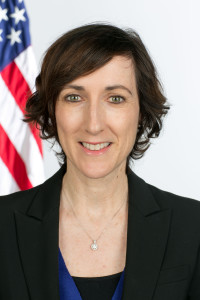 Exclusive
Exclusive ‘CEOs’ to build on $2B in acquisition savings
The Office of Federal Procurement Policy named 11 executives to manage $270 billion in spending across 10 commodity areas under the category management initiative.
The Obama administration’s decision to name 11 executives to lead the government down the path toward better buying is one of 23 actions it has taken over the last 15 months to implement category management.
Those actions, the White House says, have saved or avoided agencies spending more than $2 billion.
Anne Rung, the administrator of the Office of Federal Procurement Policy, said naming the category managers is a crucial step in getting greater value out of the $440 billion the government spends annually on procurement.
Rung named 11 category managers on Feb. 25 to bring 10 commodity buying areas under better control by conducting spend analysis, market research, financial and supply chain risk analysis, and using this information to develop strategic plans specific to the category with clear metrics and outcomes.
“OMB, working with the category management leadership council, identified the agencies that would manage each of these categories. We looked at the agencies with the greatest amount of expertise and proven excellence in their category. We allowed the agencies to identify the best person to run the category,” Rung said in an interview with Federal News Radio. “These category managers are category CEOs, so we did specify that we wanted a senior executive managing these categories.”

Rung said the executives will act like CEOs of private sector businesses to drive improvement across all of these 10 categories, which account for about $270 billion in annual spending across the government.
“These are category CEOs managing in many respects a large business. So we are looking for the leadership skills to really drive interagency teams of subject matter experts,” she said. “The delivery may be done in other agencies, but these are the teams that are the subject matter experts, working with industry, developing and promoting strategies really helping to drive the adoption of it across government. These are big important roles for the government.”
The category managers have near-term and longer-term priorities.
Rung said each CEO will develop a specific strategy, metrics and outcomes based on the data analysis and market research around the category.
She said the category management leadership council will approve each specific strategy.
“The success of these category managers is going to be in identifying specific areas of spend that we can initially begin in,” Rung said. “If you think about this as start-up company, where we are testing some proven strategies in government and industry across targeted subcategories of spend, and then we will test it and scale it up over time across broader areas of spend in that category.”
One such example of this approach is the Office of Management and Budget’s policy from October that requires agencies to buy most of their new laptop and desktop computers from one of three governmentwide acquisition contracts.
Rung said this initiative is using proven strategies to test the outcomes in the federal government space.
“We are confident that that PC memo will reduce duplication in government, will drive greater savings and will bring more spend under management,” she said. “That is an example of where we are starting in a very targeted subcategory within the IT spend area. We will follow up, as you know, with strategies around software and eventually mobile, which together represent $10 billion in spend.”
OMB issued draft software management guidance in December, and Rung said her office is reviewing comments. She gave no timetable for when OFPP would issue the final policy.
OMB has yet to release the mobile policy, even in public draft form, but an internal draft copy obtained by Federal News Radio in January would require agencies to buy all mobile devices and services from the General Services Administration’s governmentwide wireless contract.
“Thinking about this as a start-up effort, where we are testing and scaling up over time, I do expect the categories to evolve,” Rung said. “One of the first things the category managers need to do is deep data analytics, and we, indeed as a result of that data analytics, find or discover we may want to refine some of these categories. Another important point is that there will be some cross-pollination of these categories so if we are going to be successful in driving some of these strategies, it will be a collaborative effort often times among many of the category leads.”
She said, for example, there always will be an IT component within many of the other categories.
Rung said category management is an umbrella for which a host of strategies fit underneath. She said strategic sourcing is one such approach, but so is education of the contracting workforce and working closely with industry to develop better terms and conditions for contracts.
Through the first 15 months, OFPP said agencies saved or avoided spending $2 billion.
“We’ve spent a considerable amount of time meeting and talking to category management, strategic sourcing teams out in the agencies and doing so identified some great work by agencies like VA, Navy and DHS around IT outsourcing, drugs and pharmaceuticals and IT software where we identified $1.5 billion in savings from those efforts, and then, of course, on top of the $500 million we’ve saved under strategic sourcing, we’ve already saved $2 billion through these smart buying practices,” Rung said.
She said OFPP “rigorously approved” each agency’s claims of savings based on a methodology developed by the leadership council.
OFPP also is charging the CEO of each category with supplier relationship management.
Rung said that is a key lesson learned from efforts in the United Kingdom and by Johnson & Johnson — representatives from both organizations recently briefed the category management council about their respective efforts.
“It’s really working closely with our contractor community and business partners to better manage those relationships and that can be, for example, working with some of our top suppliers to help them navigate across or think about the relationship we have with certain companies not within our individual procurement siloes, but across an enterprise. We can work together ways we can be smarter in how we work together,” she said. “We have to have industry as a partner from beginning to end in this process. The idea here is that we want to adopt practices from industry in being smarter how we buy. The industry partnership is key and each category manager will develop a strategy to ensure they are part of this process in the right way.”
Copyright © 2025 Federal News Network. All rights reserved. This website is not intended for users located within the European Economic Area.
Jason Miller is executive editor of Federal News Network and directs news coverage on the people, policy and programs of the federal government.
Follow @jmillerWFED
Related Stories







